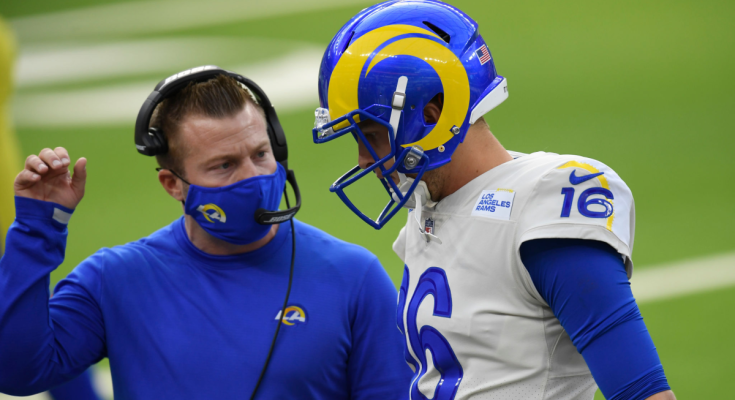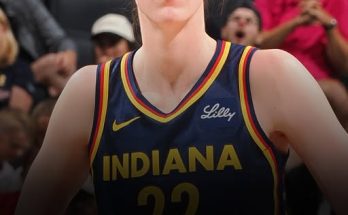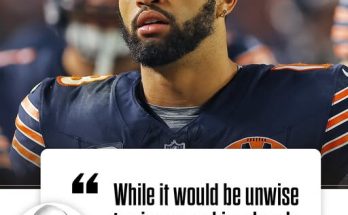Matthew Stafford has always been known as one of the NFL’s toughest quarterbacks, and that reputation is being tested again as the Los Angeles Rams prepare to open training camp. With the announcement that Stafford will be limited due to back soreness, many fans and analysts have raised eyebrows. However, head coach Sean McVay’s reassurance that Stafford is “absolutely” expected to be ready for the regular season offers a dose of optimism amid concerns. Still, it’s worth digging deeper into what this means not only for the Rams but for Stafford himself, considering his history, age, role in the offense, and what it takes to manage a franchise quarterback dealing with recurring physical challenges.
To understand the significance of Stafford being limited in camp, it’s essential to appreciate the quarterback’s journey to this point. Now entering his 16th season in the league and his fourth with the Rams, Stafford is no stranger to pain. He has long been one of the most physically durable and mentally tough players in the league, often playing through injuries that would sideline many others. From his early days with the Detroit Lions, Stafford has taken a considerable amount of punishment behind struggling offensive lines and has had to carry underperforming teams on his shoulders. That kind of wear and tear doesn’t disappear—it accumulates, and back issues are particularly tricky for a quarterback who relies on rotational power and precise mechanics.
Back soreness may not sound like a major concern to the casual observer, but in the NFL, any ailment involving the back is taken seriously—especially when it comes to quarterbacks. The back plays a central role in everything a quarterback does, from planting and driving throws to absorbing contact in the pocket. It affects balance, throwing velocity, and footwork, all of which are foundational elements of Stafford’s game. The Rams have wisely decided to limit his workload early in camp as a precaution. At 36 years old, Stafford is far from a young player, and smart load management in the preseason could be the key to ensuring his availability in the regular season and, hopefully, the playoffs.
Sean McVay’s assertion that Stafford will be ready for the regular season should be taken seriously. McVay is not known for embellishment or unnecessary optimism. His communication style is usually grounded in realism with a touch of competitive spirit. That said, coaches often walk a fine line when addressing injuries during training camp. On one hand, they must provide information to the media and fans; on the other, they don’t want to reveal too much or raise panic unnecessarily. In Stafford’s case, McVay’s public confidence likely reflects a combination of trust in his quarterback’s resilience and medical staff evaluations that don’t indicate any structural damage or long-term issues.
Limiting Stafford in camp also opens the door for some positive side effects. For one, it gives more reps to backup quarterbacks like Stetson Bennett and Jimmy Garoppolo, both of whom need as many live snaps as possible to build chemistry with the offense. While Stafford’s presence is irreplaceable, having backups who are more prepared could make a difference later in the season if an injury were to occur. Training camp is not just about installing the offense; it’s also a proving ground for depth and development. A few weeks of lighter work for Stafford could translate into big gains for the overall preparedness of the quarterback room.
It also serves to remind fans and analysts alike of the brutal toll football takes on the human body, particularly at the quarterback position. Quarterbacks may not absorb the constant hits that linemen or running backs do, but the impacts they take are often from 250-pound pass rushers moving at full speed. That kind of collision has a cumulative effect, especially over 15-plus seasons. The decision to limit Stafford is as much about managing his future as it is about protecting the Rams’ current campaign. The franchise has already made its intentions clear—they are still trying to win now, despite having one of the youngest rosters in the NFL.
In the grand scheme, Stafford’s back soreness is not necessarily an ominous sign of impending doom. In fact, it might be better interpreted as a strategic adjustment—one that acknowledges the reality of having a veteran quarterback while still planning for a competitive season. This is a team that shocked many in 2023 with a strong finish and a playoff appearance, fueled by an elite connection between Stafford and superstar rookie receiver Puka Nacua. Stafford remains the glue that holds the Rams’ offense together. The arm talent is still elite. The decision-making remains sharp. And most importantly, the leadership he brings to the huddle and locker room cannot be overstated.
There’s also a psychological element to managing injuries during training camp. For a player like Stafford, who thrives on preparation and repetition, being held back can be frustrating. But it also forces a level of mental engagement that can be just as valuable. Film study, mentoring younger players, and participating in walk-throughs allow Stafford to stay sharp without putting additional strain on his body. In fact, some quarterbacks have benefitted from similar approaches late in their careers. Think of how the Buccaneers managed Tom Brady’s practice load, or how Aaron Rodgers was often given days off to preserve his arm and legs. There’s a balance between rest and rust, and the Rams seem committed to finding it.
The medical staff will play a pivotal role in how this situation evolves over the next few weeks. Monitoring symptoms, adjusting physical therapy regimens, and maintaining communication with the coaching staff are all essential components. Modern sports medicine has evolved to the point where back soreness, if caught early and treated correctly, does not necessarily lead to missed games or deteriorating performance. But it does require cooperation from the athlete and attention to detail from everyone involved. The Rams are fortunate that Stafford is both self-aware and experienced enough to communicate clearly about his body. That transparency makes proactive decisions like these more effective.
Another angle to consider is the Rams’ offensive philosophy. This is not a team built around a run-heavy identity. The Rams’ offense relies on timing, rhythm, and explosive passing plays. That makes Stafford’s health even more critical. Without him operating at full capacity, the playbook shrinks, and the team becomes easier to defend. There is no replacement for his arm strength and deep-ball accuracy, particularly on intermediate routes that require precision. McVay’s play-action-heavy system is tailored to Stafford’s skill set, and while other quarterbacks can run the offense in a pinch, the ceiling is drastically lowered without Stafford on the field.
Looking at the upcoming schedule, the Rams open the regular season with several tough matchups that will require Stafford to be at his best. With divisional battles against the 49ers and Seahawks, plus out-of-conference tests, there’s no margin for error. The NFC West remains one of the more competitive divisions in football, and every game counts when trying to secure playoff positioning. Limiting Stafford now could be the key to maximizing him when it matters most—in September, October, and beyond.
There’s also a broader lesson here about how franchises manage aging stars. The days of grinding veteran quarterbacks through every practice and preseason snap are fading. Teams now understand the importance of conservation, both for physical health and performance longevity. Stafford’s situation may be specific, but it’s reflective of a league-wide trend. Even players at the pinnacle of the sport are subject to strategic rest and recovery protocols. In a sense, Stafford being limited in camp is a mark of his value. The Rams understand what they have in him, and they’re doing everything possible to preserve that asset for the games that count.
It’s worth remembering, too, that this isn’t the first time Stafford has dealt with back issues. He missed the final eight games of the 2019 season with the Detroit Lions due to fractures in his back. The Rams were aware of that medical history when they traded for him in 2021. That move, of course, paid off almost immediately as Stafford led the team to a Super Bowl title in his first season with the franchise. Since then, injuries have continued to challenge him—including an elbow issue in 2022 and a concussion scare. Yet through it all, Stafford has demonstrated resilience and an unwavering commitment to compete. This latest setback doesn’t change that.
From a fan’s perspective, it’s easy to worry when your starting quarterback is dealing with anything remotely injury-related. But it’s important to interpret this news within context. Stafford is not missing games. He’s not undergoing surgery. He’s not showing signs of a significant drop-off in ability. What the Rams are doing is managing a temporary issue with the long-term goal in mind. If anything, this should instill more confidence in the organization’s planning and transparency.
Of course, it will be critical to monitor how Stafford looks once he does ramp up his workload. How he throws, moves in the pocket, and responds to the speed of live reps will give everyone a better idea of where he stands physically. The preseason may offer limited glimpses, but the real test will come when the regular season kicks off. By then, we’ll know if this current back soreness was just a bump in the road or the first sign of deeper concerns.
In conclusion, while Matthew Stafford being limited to start training camp due to back soreness is newsworthy, it’s far from alarming when analyzed holistically. The Rams appear to be acting cautiously and responsibly, choosing to protect their most valuable player from unnecessary risk. Sean McVay’s confidence, combined with Stafford’s track record of toughness and professionalism, paints a picture of optimism rather than panic. As training camp unfolds, Rams fans would do well to keep faith in a quarterback who’s already proven he can overcome adversity—and trust that this is just another chapter in a career defined by grit, perseverance, and elite-level play when it matters most. The real story won’t be told in July or August but in the crisp Sundays of fall, where Stafford once again aims to lead his team to glory.



